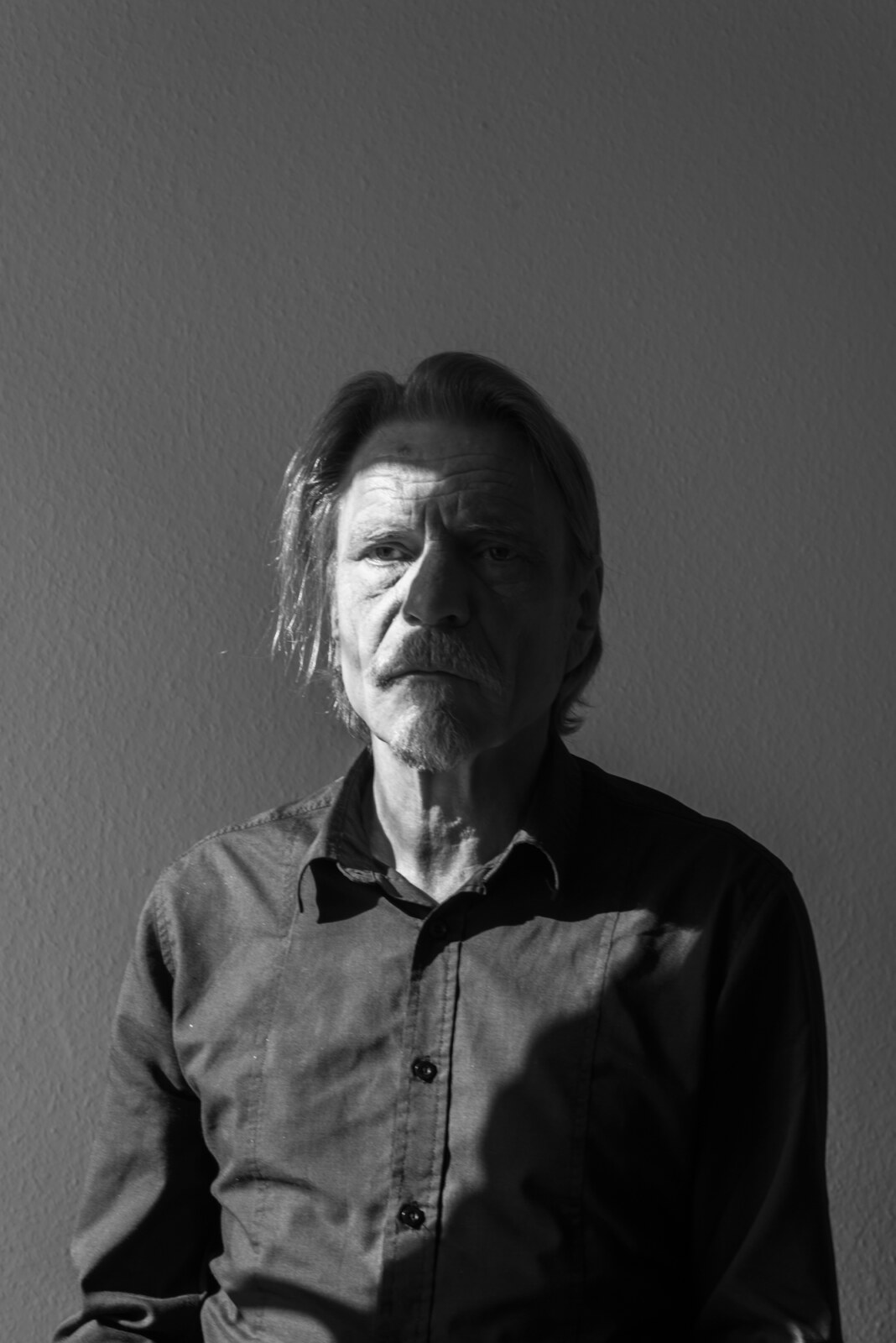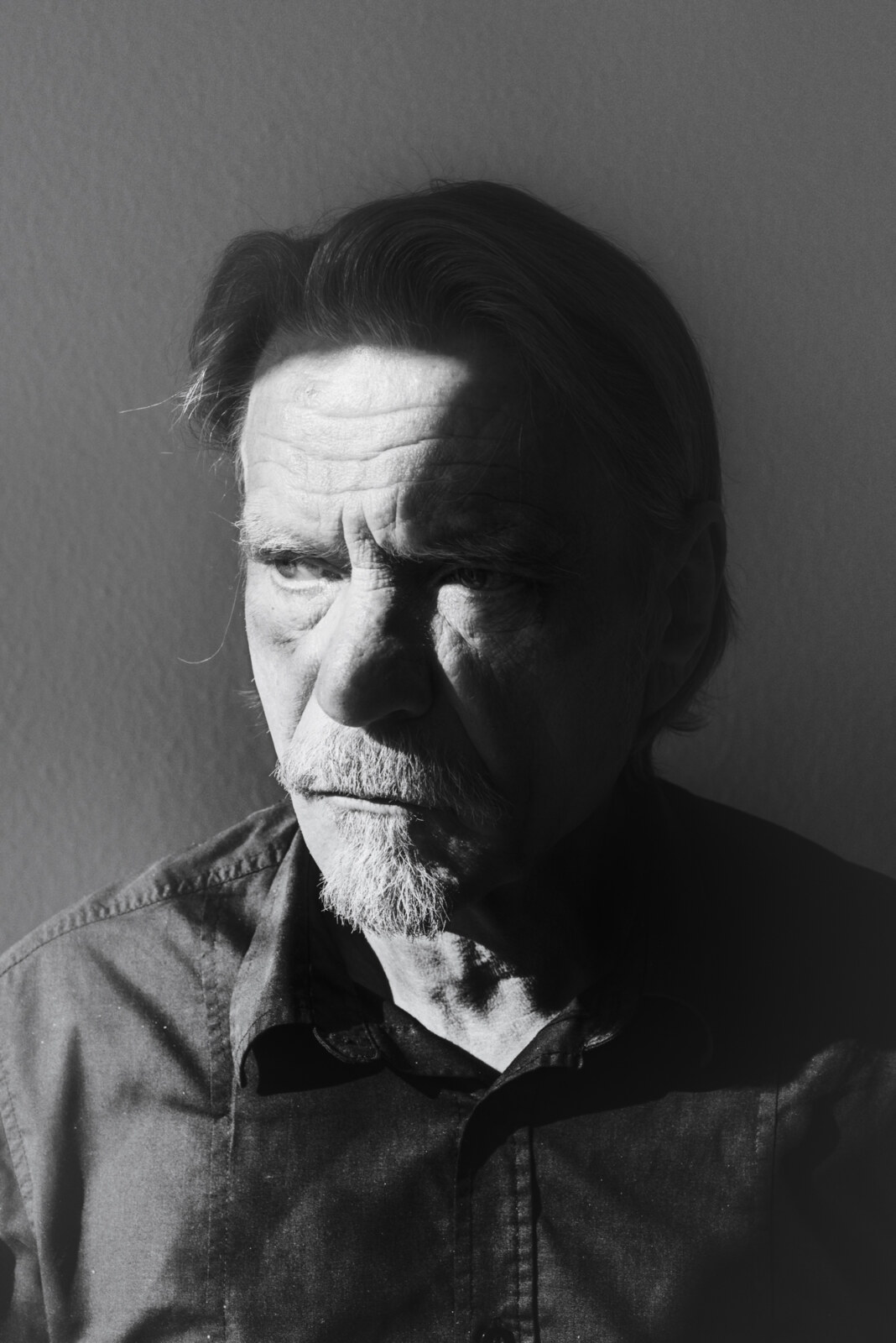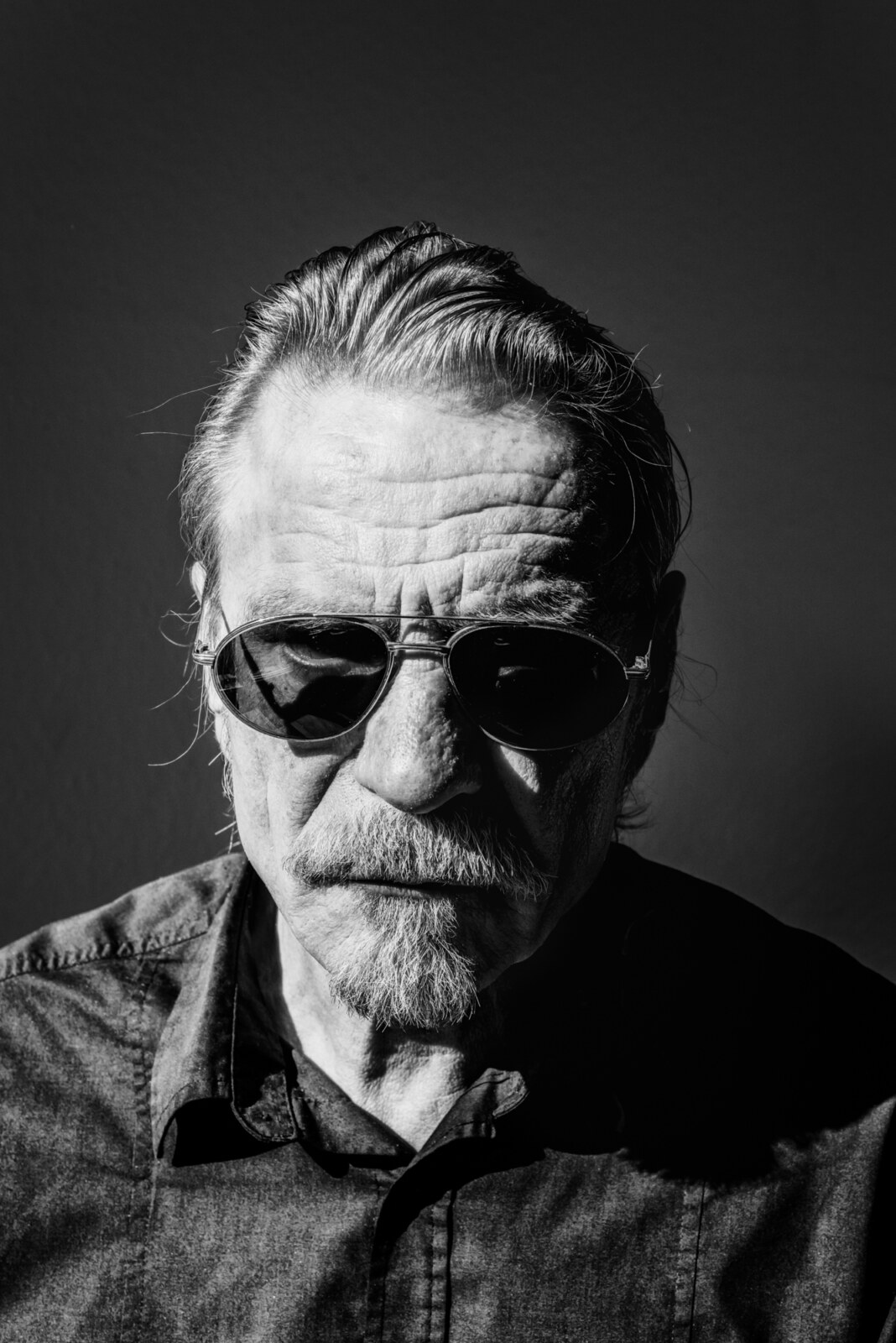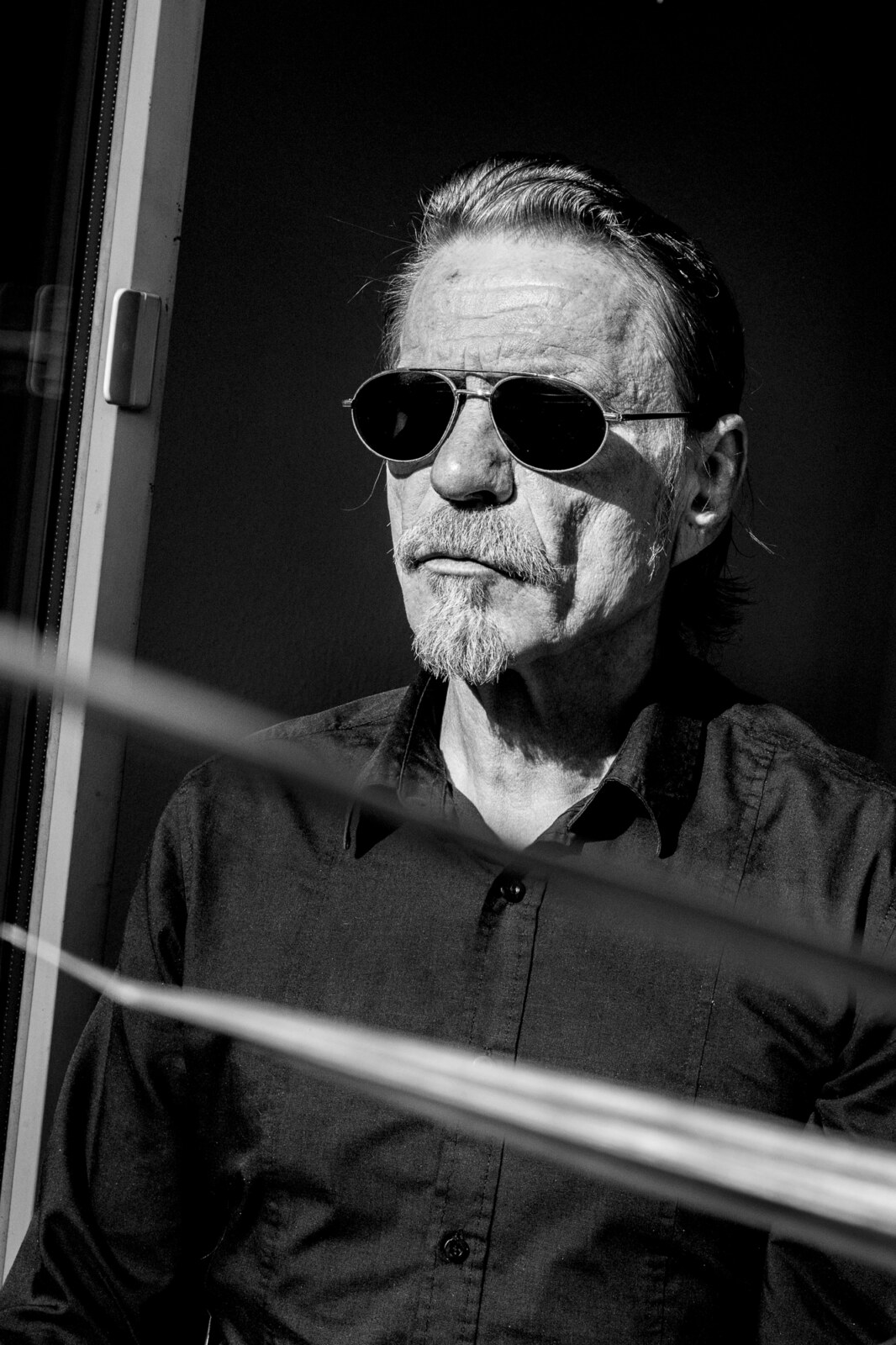Kristof Hahn | Interview | New Album, ‘Six Pieces’
Kristof Hahn is best know for his role in the New York experimental rock band Swans, where his work on lap-steel guitar has provided a critical and unsteady sense of tonal variation and glissandi.
On ‘Six Pieces’, Hahn draws upon the legacy of his time touring with Swans, using archival loops and singular elements created in the moment as a jumping off point for a series of deep and evolving investigations into his instrument. The results are spiralling cascades of shimmering guitar cut against thick brooding washes of timbral intensity. ‘Six Pieces’ is a work is restless intent, a collection of instrumental interrogations that test for the boundaries of harmony, texture and emergent variation.
Kristof Hahn joined Swans in 1989 for the Burning World tour and played on the subsequent album ‘White Light from the Mouth of Infinity’ (1990). He left the band in 1992, joined Swans’ bandleader Michael Gira’s follow-up project ‘Angels of Light’ in 1998 and became a constant member of the Swans relaunch from 2010 until 2017. His approach to the lap-steel guitar is less rooted in traditions but more drone-oriented, creating vast soundscapes that at times erupt into sonic thunderstorms and at other times resolve into ethereal melodies.

“The idea presented itself when I was transferring the loops”
What’s the story behind making ‘Six Pieces’? What was your creative process using the archival loops?
Kristof Hahn: The idea presented itself when I was transferring the loops that were stored in my looper pedal onto my computer. Those had been made during the previous 5 years of Swans’ tours and recordings. Some of them were pretty prominent in several songs, others had provided a sonic background the origin of which could not be identified and thus went “unnoticed”, even by myself when layers and layers of sound were added on top of them and they got buried in a sonic landslide. Listening to them again gave me the idea to rearrange and combine them in new ways using recording software as an additional instrument. Once I started that I somehow got sucked into a maelstrom (playing new tracks on top of the existing loops) and ended up with about a dozen pieces of music without rhythm or melody that all somehow have the effect that they help you slow down and intensify your breath if you focus on it.
“Michael Gira always encouraged me to play the lap-steel and explore new territories”
Your approach to the lap-steel guitar is less rooted in traditions but more drone-oriented, creating vast soundscapes. What are some of the most important musicians that influenced your own style and what in particular did they employ in their playing that you liked?
There are many traditional steel-guitar players who I admire very much. Any attempt from my side to contribute to that field however would be doomed to fail, since I don’t have the virtuosity that is required to make such music. So I decided to take a different approach and focus on the sonic qualities and explore these. My lap-steel playing is indeed “drone-oriented”, though not exclusively, and also not always vast, I consider some of the pieces slightly claustrophobic sonic environments – even though they have a certain opiatic warmth and coziness. Some musicians that I enjoy(ed) a lot were/are Robert Fripp (‘(No Pussyfooting)’), Pierry Henri, Bernard Hermann, Jimmy Guiffre (‘Train and The River’, ‘Ode to Switzerland’), Glenn Branca … and Michael Gira. He was the strongest influence because he always encouraged/pushed me to play the lap-steel and explore new territories.
Can you share some further details on how your latest album was recorded?
I was listening to the loops played through an amplifier and changed the settings on the amp , which in some cases sounded like a choir of voices. So I re-recorded the loops and then layered more tracks (and loops) on top of them… I used mostly my Rickenbacker 10 string lap-steel in different tunings but also an 8 string Framus and a hybrid lap-steel with 3 bass strings and 4 guitar strings built by Saitenraiter, a Berlin based guitar maker. Beside that there is one looper pedal with a maximum loop-length of 16 seconds (at half-speed, which gives you nice sound options) and another one where there was no limit; very important are the volume pedals and the e-bow.

Was there a particular mood you were trying to capture? A story you were trying to tell?
The actual recordings happened over a period of about 2 months in the (not immediate) aftermath of several years of touring with Swans. They do in some ways reflect on those years, revisiting some sounds like flowers in a park. The music sometimes alludes to the sounds inside a ferry, or the rush-hour din at the intersection of Atlantic and Pacific in Brooklyn…the static on tv-screens in motels late at night..

The album itself is quite complex. Was it difficult to get all the material together?
I had a lot of material and sonic options to begin with, then I got into this recording frenzy so the main problem was to narrow everything down to an orchestrated structure.
I hope you don’t mind if we also talk about Swans? What led you to join them in 1989?
I happened to be in NYC when Swans were looking for musicians for the Burning World tour. Vinnie Signorelli, who had lived in Berlin for several years in the 80s and was a good friend of mine became their new drummer and he suggested me as an extra guitar player – I was playing regular electric guitar in those days. I was invited to an “audition” and hired after I had played a few classical pieces of which Michael liked the modern ones best. He also likes to read and we found out we have a few favourite books in common. I also really liked their new album and was fascinated by the perspective of travelling around the world with a band – which was quite a different experience in those days than it is now. No smart or dumbphones, no internet, not even walkman. The whole band listened to tapes which the driver either picked or did not put a veto in against.
What are some recollections from working on ‘White Light from the Mouth of Infinity’?
This was the first time I recorded with Michael, and I learned a lot about the process. The rehearsals started out with him and me figuring out guitar parts and chords, then Jenny Wade joined us and we worked on her bass-parts, then Anton Fier on drums, and Clinton Steele. We went to a studio on Broadway and recorded pretty much all the instruments except Jarboe’s. I was not there for the mix or the vocal recordings because I had to go back to Germany again.
“Swans will record a new album at the beginning of next year”
We also need to mention your work on Michael Gira’s follow-up project Angels of Light. How did that come along?
I had become a father in 1992 so I figured I couldn’t be in a touring band in the near future. The Swans were terminated in 1996. Michael contacted me in 1998 and asked me if I wanted to be part of a new project. He described it to me and I found it very interesting. We met in Atlanta and recorded in a studio where we had to face a lot of (outside) difficulties but managed to create an amazing album. It was the second time Michael and I worked closely together before the other musicians entered the scene. It was there that the lap-steel became my main instrument. The subsequent tours and albums had great songs, very unusual combinations of instruments and orchestrations.

What are some future plans after the album is officially out?
Swans will record a new album at the beginning of next year. We probably will not start touring before 2023 and will probably not do so as extensively as we did before, which gives me a lot of opportunity to perform as a solo artist and work on new material.
Thank you. Last word is yours.
Now I need a cigarette.
Klemen Breznikar
Phot by Tatiana Hahn
Kristof Hahn Instagram
Room40 Official Website / Facebook / Instagram / Twitter / Bandcamp / YouTube




